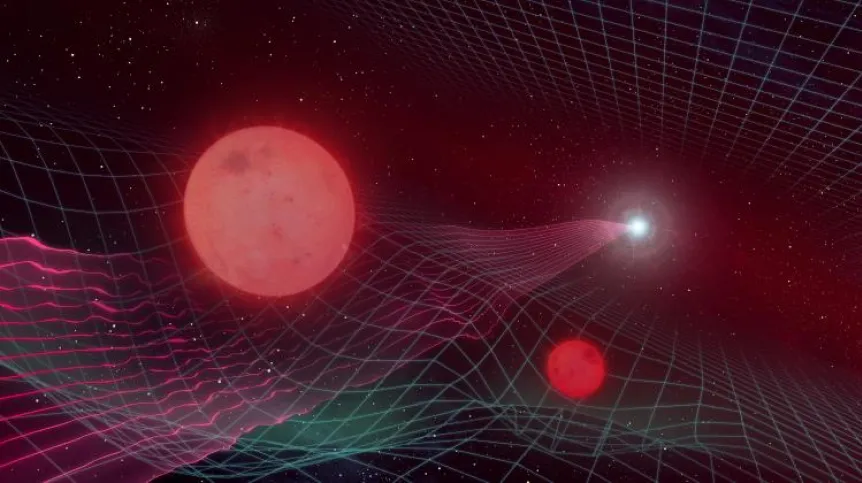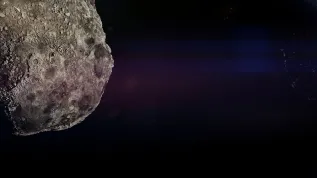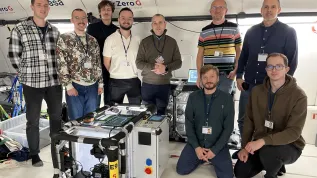
For now, only a few dozen black holes have been found in our galaxy, although there are probably hundreds of millions of them out here. As part of the space mission Gaia, Polish astronomers have now revealed the secrets hidden by a pair of invisible stars and proved that they had a good method of looking for black holes in the Milky Way.
"Through our research and observation, we were able to see something that normally could not be seen: a star system that emits little light,” says Dr. Łukasz Wyrzykowski from the Astronomical Observatory of the University of Warsaw. The Gaia16aye binary system in the Cygnus constellation consists of two red dwarfs.
The observation was made thanks to a gravitational microlensing method. It is based on the fact that massive objects bend space-time. And thus the light of distant stars is unexpectedly and temporarily amplified when a massive object passes in front of them.
PhD student Krzysztof Rybicki from the Astronomical Observatory of the University of Warsaw explains that the only thing we observe in the phenomenon caused by the Gaia16aye binary system is a change in the observed brightness of the object that lies very far behind this system.
Although the binary system itself was not visible, scientists were able to measure it, determine the masses of its objects and the parameters of the orbital system. The research has published in the journal Astronomy and Astrophysics.
The study used the Gaia space mission launched in 2013 by the European Space Agency. “The alert system in Gaia, which we coordinate, allows us to detect anomalies in the sky. We discovered one of these anomalies in 2016. The anomaly was then observed very precisely by a network of observatories spread all over the globe,” says Dr. Wyrzykowski.
“We received all these data, analysed them and managed to get a very precise image of this system, which normally would not be seen,” he added.
A two-year observation campaign initiated by Dr. Wyrzykowski, conducted with about 50 telescopes, allowed them to collect around 25,000 photos. Instruments from Poland, on which students and scholarship holders of the National Children`s Fund often conducted observations, also actively participated in the research project. The phenomenon was also observed in amateur home and school observatories around the world.
“We started all this to find black holes,” says Dr. Wyrzykowski. He explains that thanks to this discovery, researchers have proven that they already have a tool that can be used in the future search for black holes.
Krzysztof Rybicki points out that black holes “are known because they interact with their surroundings: with the matter that surrounds them, with the accretion disk, or with a companion from which the matter is accreted (sucked) into a black hole.” They can only be registered thanks to the light (and radiation) around the black holes.
“However, what we have never seen is a standalone black hole,” says Krzysztof Rybicki. He adds that only 50 black holes have been observed in the Milky Way, and as far as we know, there should be hundreds of millions of them in our galaxy.
“Our method allows us to see the invisible,” says Dr. Wyrzykowski. He explains that to determine what the lens is, it doesn`t need to emit a single photon of light.
According to Krzysztof Rybicki, microlensing is by far the most effective method of detecting such completely invisible objects.
“I think that this year we will have the first black holes. I am an optimist,” Dr. Wyrzykowski said.
Practical applications of the gravitational lensing method to find invisible objects, such as black holes or planets, were developed in the 1980s by Bohdan Paczyński, a Polish astronomer working at Princeton University in US. The Polish OGLE project has been using the Paczyński method for almost 30 years. As a result, several dozen planets and several candidates for black holes have been discovered.
PAP - Science in Poland, Ludwika Tomala
lt/ agt/ kap/
tr. RL













